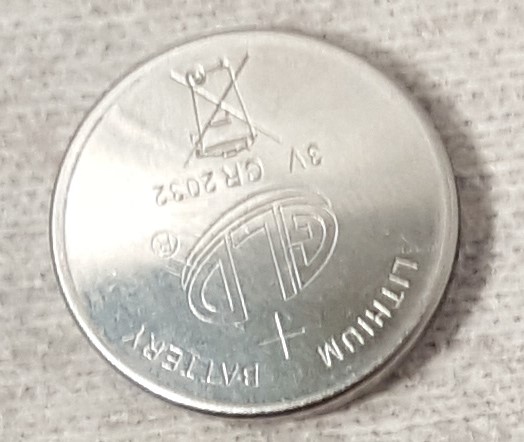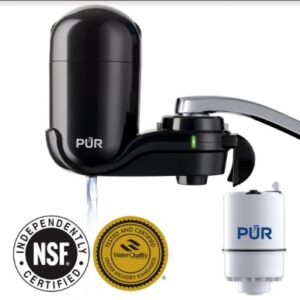A question from someone unknown to me on September 23, 2020:
Hi Daniel,
I just stumbled across your website and specifically this article: https://danielstraining.com/march-6-2019-usdot-changes-regulations-for-transport-of-lithium-batteries/
I am trying to mail a water filter like the one in the image I attached.
When it showed up to me it had some of the UN stickers and said “forbidden for transport by air or vessel”. It does have some type of battery in it to monitor when the filter life is up.
My question is, do I need to provide one of the UN stickers on the attached image to mail it with USPS? I’m just confused if the stickers are only required for mailing batteries themselves, or if the stickers are required when there is just a battery inside the unit.
Thank you!
|
Daniels Training Services, Inc. 815.821.1550 |
My reply the same day:
I will try to answer your question. Please see below.
To give a complete answer the size and type of the battery must be known. However, based on the image I will presume the following:
- It is a cell and not a battery. A lithium cell is a single encased eletrochemical unit with one positive and one negative electrode. A lithium battery is two or more cells electrically connected together and fitted with devices for use.
- It is a “button cell”. Defined in the IATA Lithium Battery Guidance Document for 2021 as a round small cell or battery with an overall height that is less than the diameter.
- It is a lithium metal type cell and not lithium ion. Lithium metal cells/batteries are non-rechargeable whereas lithium ion (Li-ion) cells/batteries are re-chargeable and typically used in consumer electronics.
- Its lithium metal content is no more than 1 g. A cell of this size is subject to a packaging exception as a smaller lithium cell/battery.
If the above presumptions are true, the requirements for its transportation in commerce can be summarized as follows:
- The equipment with cell inside must be packed securely in an outer packaging.
- Outer packaging must be of suitable material and adequate strength.
- The equipment must be secured against movement within the package.
- The equipment must be packed to prevent accidental activation.
- It is not necessary to display any package marks or labels on the outer package.
- If the battery is packed by itself or with – but not in – the equipment it is meant to power more stringent regulations apply.
- You may find more helpful information in this other article I wrote: Classification of Lithium Batteries for Transportation in Commerce.
- Since you indicate you will be mailing by USPS, I suggest you refer to USPS regulations.
Also…
- I don’t know why the package would display a mark or label indicating it is forbidden for transport by air or vessel. If my above presumptions are correct this package is not forbidden for transport by either mode.
I hope this helps. Please contact me with any other questions.
|
Interested in a Webinar that covers this topic, and more! |
He had more information and more questions (09.24.20):
Thank you very much for your quick reply. I have a second one of these that I cracked open to find the battery. It is a button battery about the size of a nickel, so this would NOT require any markings on the package? And for the one I will be mailing the battery will be inside the unit just as it was from the manufacturer.
What would be a normal consumer product that would require the markings when shipping? Something like an iPhone?
Thank you for the USPS website reference!!
I had more answers:
The transportation of lithium batteries (all batteries) is very complicated. Please be advised that I am providing only general guidance. If you are shipping the batteries as part of a business you are subject to more strict penalties.
In general:
- Smaller lithium batteries (those typically used in consumer devices) are subject to less regulation. This includes both lithium ion and lithium metal. My article: Classification of Lithium Batteries for Transportation in Commerce includes a table displaying the lithium content thresholds between “smaller” lithium cells/batteries and fully-regulated cells/batteries.
- A lithium cell or battery packed alone is subject to the most stringent regulations.
- A lithium cell or battery packed and shipped in the equipment it is meant to power is subject to less regulation.
- A button cell battery contained in the equipment it is meant to power is subject to very little regulation other than safe packaging.
- The battery in an iPhone – and most other consumer items – will likely be lithium ion and will also likely have a Watt-hour (Wh) rating below the threshold for a “smaller” cell/battery and therefore subject to less regulation. The only package mark or label it might require is the lithium battery mark.
- I wrote “might” regarding the display of the lithium battery mark because the requirements for its display depends on several factors:
- The size of lithium cell/battery.
- Whether the cell/battery is packed alone, with the equipment it is meant to power, or in the equipment it is meant to power.
- The number of cells or batteries in the package and the number of packages in the consignment. e.g., if you ship more than two battery packages in a consignment, all packages must display the lithium battery mark.
Please contact me with any other questions.
He needed some additional clarification:
So since I am just mailing one unit, with a button cell battery contained inside the equipment, I should not include any markings on the package is what I am concluding from your bullet points, correct?
My reply:
Based on the information provided, that is correct.
He was grateful:
Thank you for your time!
|
Like this article? Subscribe to my Monthly Newsletter No marketing emails! |
Conclusion:
If the above exchange doesn’t make this clear, let me clearly write it now: the transportation of lithium cells and batteries is very complex and is only going to become more so. By the time you read this article the regulations may have already become more stringent. Be sure to do your research into the applicable regulations before you prepare, package, and offer for transport a lithium cell or battery.


